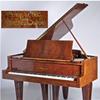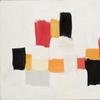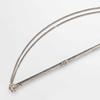Philadelphia Museum of Art to Renovate and Update Chinese Galleries
- PHILADELPHIA, Pennsylvania
- /
- March 15, 2018
The Philadelphia Museum of Art will soon begin the first comprehensive renovation and reinstallation of its galleries of Chinese art in many decades. This initiative will enable its staff to reimagine the presentation of this important part of the Museum’s collection and interpret it in new ways for the benefit of visitors. This represents the next step in an ongoing series of reinstallations of the Museum’s collection that began with the Rodin Museum in 2012 and continued with the renovation of its galleries of South Asian art in 2016. Beginning April 11, 2018, six galleries in the wing of the Museum devoted to Asian art will close for approximately ten months and then re-open to the public in early 2019.
Timothy Rub, The George D. Widener Director and Chief Executive Officer, said: “This once-in-a-generation project follows the success of our new galleries of South Asian art, and is proceeding in tandem with the implementation of the next phase of our Facilities Master Plan. It will transform the experience of one of the most important, but still underappreciated parts of our collection. In addition to renovating these galleries, a step that is long overdue, this project will enable us to re-present and reinterpret our extensive holdings of Chinese art for the benefit of our visitors and will also serve as the basis for a new, purpose-built curriculum taught by our educators. These efforts will create relevance, deepen understanding, and renew our visitors’ appreciation for different cultures and artistic traditions around the world.”
Scope of work
A $2 million initiative, this project on the second floor of the main building will promote improved visitor engagement with Chinese art through the implementation of significant physical improvements, including new gallery furniture and the creation of better sight lines. Select windows will be enclosed, improving conditions for the display of light-sensitive textiles and paintings not previously exhibitable in these galleries, while new lighting will enhance the viewing experience. The Museum’s exhibition team is designing purpose-built casework, some equipped with internal lighting that will dramatically improve viewing clarity. These changes will allow for greater flexibility in the rotations of works of art, giving curators the opportunity to regularly refresh the installations and offering returning visitors new works to experience. The project will also benefit from a multi-year study of interpretation strategies, including the development of new learning resources and training, for teacher workshops and new school visits.
Reinstallation
The reinstallation is led by project director Dr. Hiromi Kinoshita, The Hannah L. and J. Welles Henderson Associate Curator of Chinese Art, supported by staff specialized in Exhibition Design, Education, and Publishing. Dr. Kinoshita’s interpretive plan is arranged around key themes through which four thousand years of art can be understood. It will present a new comprehensive display of Chinese art in all media, including paintings, sculpture, porcelains, ceramics, carvings, metalwork, costume and textiles, furniture, and contemporary works.
The galleries will focus on key concepts in Chinese culture, and groupings will be arranged thematically and chronologically. The first two galleries dedicated to The Afterlife: Tombs and Immortality will highlight the collection’s strength in Chinese funerary art to explore ideas of life after death and filial piety. The next gallery will focus on Fascination with Nature: Expressing the Self Through Art, with works having been made, used, or collected by Chinese scholars and artists, from the Song Dynasty (960-1279 CE) onwards. A gallery will focus on Exchange and Globalization: China and the West from the 16th century to the present, encouraging visitors to think about the enduring Western interest in the materials and techniques of Chinese art and highlighting the evolution of the export market. Another gallery will be dedicated to the importance of Ordering the Universe: The Imperial Court, which will feature works of art collected and used by the imperial court emphasizing the highly symbolic nature of Chinese art. Colors, auspicious symbols about in silk robes, porcelain, and other art will be displayed as the formal side of court life (ruling), contrasted with the informal, private side.
This new installation will also make direct interpretive connections to the Museum’s three celebrated Chinese architectural interiors in adjacent galleries, all from Beijing. These include a 17th-century Chinese Reception Hall from an official residence, an 18th-century Scholar’s Study, and the Ceiling from the Hall of Wisdom Transformed at the Zhuhai Temple, an early Ming Dynasty Buddhist monastery. The Museum has recently completed an innovative, digital interpretive resource for this remarkable 15th-century temple ceiling. It greatly enhances the opportunity for visitors to understand more fully the imagery and iconography of this elaborately carved work from one of the earliest and best-preserved examples of Chinese monastic architecture. Conservation and analysis of the paint surface of a Seated Luohan (enlightened monk) displayed in this gallery has provided more information about later Buddhist wood sculpture, a relatively understudied area. Rotating displays from the Museum’s rich collection of textile sutra covers are also planned for this space.
When the renovated galleries devoted to Chinese art reopen next year, the Museum will host a family and community festival, along with Final Fridays performances and a classical music series in the Reception Hall. New in-gallery demonstration kits will also be available for visitors, offering tactile experiences of porcelain, ink painting, and lacquer ware to help deepen their understanding of the creative process. These kits will encourage social engagement and will be available to school and tour groups and to visitors during Pay-What-You-Wish hours and events.
Dr. Kinoshita stated: “Updating these galleries will make a significant impact on our visitors’ experience of this part of our collection, allowing them to fully appreciate the breadth and richness of Chinese art. This will also provide us with a great opportunity to introduce works of Chinese art held in other departments—for example, Costume and Textiles and Contemporary Art—and integrate them with the collections for which I am responsible.”
Publication
Coinciding with the reopening of its galleries of Chinese art, the Museum will publish Chinese Art: Highlights from the Philadelphia Museum of Art, in association with Yale University Press (256 pp.) This lavishly illustrated book will feature one hundred highlights ranging from antiquity to the present day. It will include an introductory essay by Dr. Kinoshita about the collection’s formation, illuminating its unique character and importance. The volume will be available for purchase in the Museum Store or online via philamuseum.org.




10270x400_c.jpg)

















